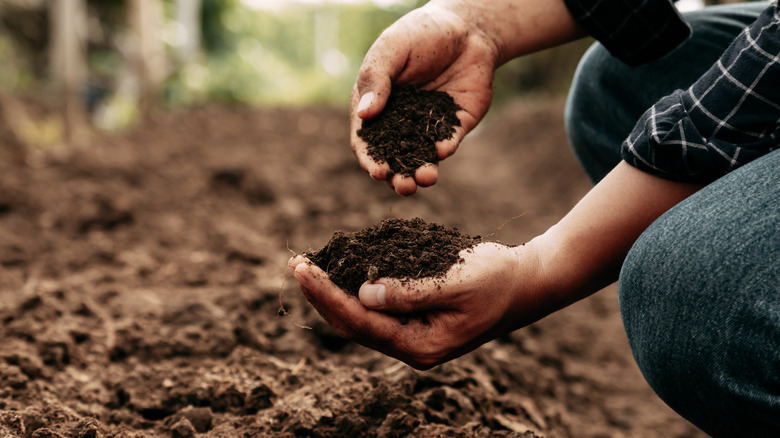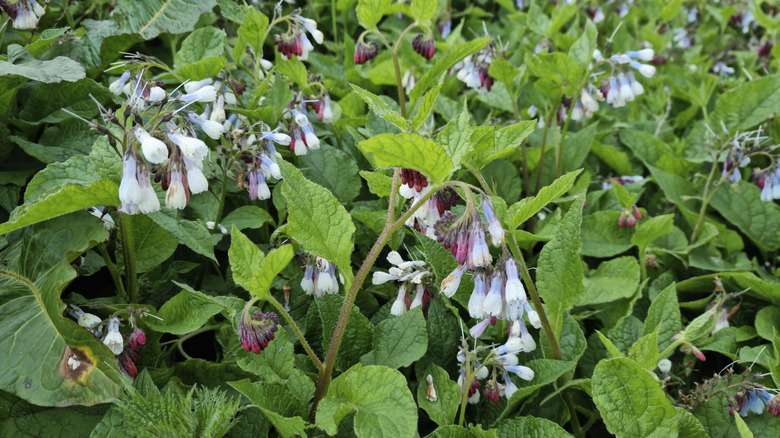Grow This Flowering Perennial In Your Garden For Naturally Healthier Soil
Healthy soil is essential for having a thriving and vibrant garden. Unfortunately, purchasing compost can be pricey, with 1 cubic foot often costing $20 or more. Luckily, you can grow your own nitrogen-rich plants to add to your compost and help improve your soil. Comfrey (Symphytum spp.) is an herb beloved for its ability to improve soil and its reputation with permaculture enthusiasts as an amazing bioaccumulator.
Bioaccumulators, also called dynamic accumulators, are plants that are believed to pull significant amounts of nutrients and minerals from the soil allowing them to grow nutrient rich leaves. Because comfrey, like many of these dynamic accumulators, has deep roots, it is thought to be taking nutrients that would be too far underground for most plants to access and is bringing them up into its leaves. By composting these leaves and using that compost to improve your topsoil, you should be able to unlock previously inaccessible nutrients and minerals for your plants.
While growing a plant just to compost it may sound like a lot of work, comfrey is surprisingly easy and fast to grow. Making compost is also less work than you might expect and can be ready in less than a month. You can even make compost in your garage if you're short on space in your yard.
Growing comfrey for better compost and soil
Comfrey seeds are widely available, but if you have friends or family with comfrey plants you can also easily propagate it from cuttings. Regardless of how you start your comfrey, be sure to plant it in full to part sun. While comfrey is tolerant of a variety of soil types, it grows best in moist conditions and is one of the best herbs to grow in wet soil. Because comfrey is a perennial in zones 4 through 8, once your plant is established, it should return every year.
As comfrey is a relatively tall herb plant and can grow up to 3 feet, you should have plenty of leaves to harvest and add to your compost once your plant is full grown. You'll also have a yard full of the plants' pretty purple flowers. These flowers aren't just beautiful either, they're also a hit with bees. J
Just be aware that comfrey is not native to North America and can become quite aggressive. In parts of the eastern United States it is even considered invasive, so be sure to check with your local cooperative extension if you aren't sure if it's appropriate to grow in your region. There are also slower-spreading varieties such as Russian comfrey (Symphytum x uplandicum) that are naturally sterile, and will only spread if someone disturbs its root systems. Keep the plant in check if you choose to grow it in your garden.

